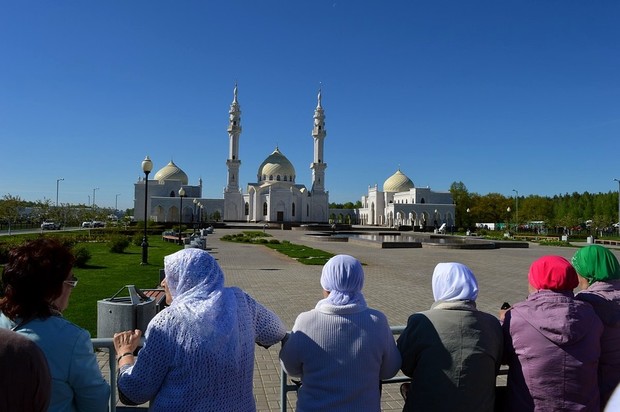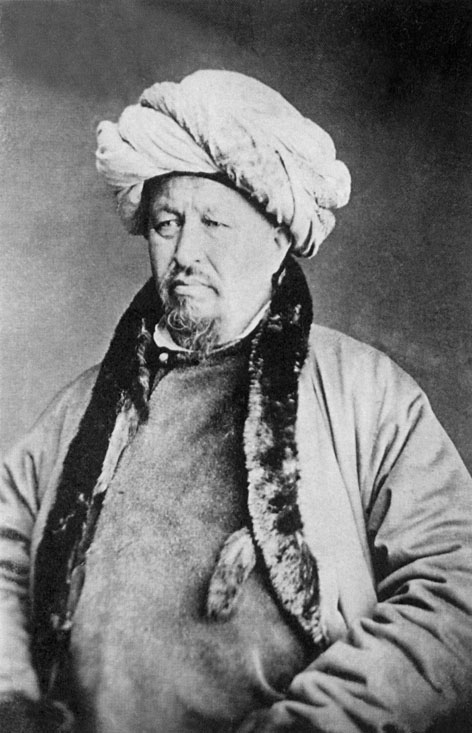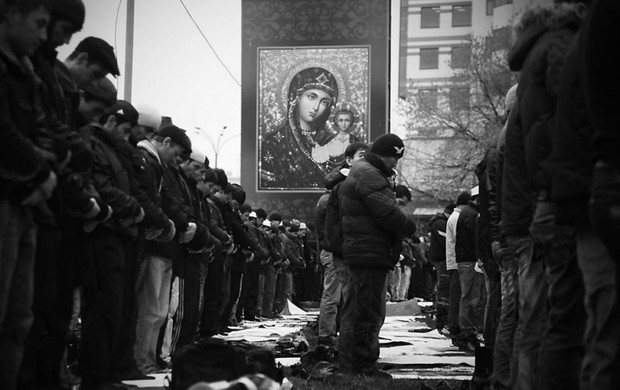''It is pointless to argue about things such as ''the date of Islam penetration'' in a region and similar myths''
Whether the companions of the prophet came to Bolgar or not? And who converted Siberian Tatars to Islam?
A columnist of Realnoe Vremya Alfrid Bustanov, a fellow at the European University in Saint-Petersburg, continues the series of articles about the Tatar hand-written book and its pecularities of life in the society. This time the Orientalist historian reflects on the term Islamization.
It is logical to assume that the history of Islamic culture in any region begins with the penetration of Islam. Of course, any educational course about Islam should begin with the story about Islamization. Let's talk about this.
Islamisation as a creative process
I believe that Islamisation is not an event and not a historical fact but a creative process. Perhaps, it is pointless to argue about things such as ''the date of Islam penetration'', ''official convert to Islam" and similar myths. Islamisation as personal and social phenomenon is constantly redefined by the society, old myths are overturned and new myths are born about how Islam penetrated into this or that territory ''in reality'' and, as a rule, why there live the best Muslims.

''Is there any criterion that allows to measure a ''level'' of Islamization, with an increase of which a success of this venture becomes apparent?'' Photo: Timur Rakhmatullin
Here it is impossible to do without the common question: how actually to measure ''Islam''? What is the litmus test of the presence or absence of ''Islam'' in a society? Is there any criterion that allows to measure a ''level'' of Islamization, with an increase of which a success of this venture becomes apparent?
I hold the view that there is no such barometer. Only members of the community can say what they think Islam is, and what, in their opinion, goes beyond it (of course, within reasonable limits of obvious requirements). The dispute about the boundaries of Islam is endless. Let me explain by an example: in the medieval burials there can be found things or even horses in harness. Is it an evidence that the population was ''non-Islamic''? It's not necessarily true. Islam could be part of public rhetoric and ritual practices, but burial rites, as the most conservative part of culture, could be different from our expectations and criteria of ''Islamity'', generally taken from Oriental and ethnographic literature.
Another example: names. It is well known that in many Islamic genealogies in the Volga region there are Turkic names without Arabic borrowings. Does this mean that these people were not Muslims even after the fall of the Kazan khanate? It is not necessarily true. Of course, a name change under a change of religion is an important act marking the transition from one state to another. However, reducing a broad range of manifestations of Islamic culture to onomastics would probably be too bold.
Stories about adoption of Islam
Thus, I propose to see in Islamisation not a fact but a creative process of creating and understanding of the Islamic community. In this perspective, the key is the story about converting to Islam of a person or community of people. Strictly speaking, in this story everything can be fictitious: dates, names, some events and their interaction. But that's not important for the authors and consumers of stories. For them, the most important is the general message and the geography of the community, that is, where ''their people'' live and where ''alien people'' live. The general message usually consists of the following: our Islam ''is not worse than of others'', we received the knowledge directly from the central regions of the Islamic civilization and so we are its integral part, it is desirable from immemorial time. Local religious history thus is included in the mainline history of Islam, associated with it important names, and then declared as self-sufficient and innovative.

For a long time I have studied legends of Islamization of Siberia. It's surprisingly stable stories, still existing in written form and transmitted by word of mouth. The essence of the legend is that a long time ago missionaries arrived from Bukhara to the banks of the Irtysh River. They fought for the faith with local pagans, and many dies at the hands of the infidels. These graves of the martyrs for the faith, scattered in the south of Tyumen Oblast and in the north of Omsk Oblast, make up an amazing cultural phenomenon. The graves of the shakhids became a place of pilgrimage for ordinary Muslims and, at the same time, the place of concentration, specific embodiment of Islamic culture in wooden architecture. In fact, it was (and is) towers or high log cabins that stand in the cemeteries or notable locations, and thereby testifying: ''this is the land of Islam''.
The intrigue lies in the fact that the story of the war for the faith in the Siberian forests appeared on the basis of the common Central Asian legends of Islamization, in which the Holy character Iskhak-Bab fights with mage-pagans and spread Islam in the region. The text of this legend was brought in the region of Tobolsk by Bukhara migrants already in the late 16th century, after a century and a half they transformed the story according to the Siberian reality, which would refer to local geographical and historical realities.
Similar stories could be heard in the Volga region. For example, in Bashkiria, I was also told about Bukharan missionaries. However, the most influential legend was the legend of the companions of the Prophet, who arrived in Bolgar for preaching of Islam. As well as in Siberia, the basis of the legend is the idea of a miracle cure of a hopelessly ill daughter of a governor, as well as the cult of holy places. Lists of revered graves are very common in the manuscripts until the late 19th century. But if to compare with Siberia, it is either the cult of holy places in the Volga region did not receive such a wide development or it quickly began to fade due to the impact of rationalists. The famous criticism of the Bolgarian legend by Shigabutdin Mardzani fully destroyed it. Mardzhani says that people should trust Ibn Fadlan with his ''official adoption of Islam'' and to reject the Bolgarian legends as fiction. Today the cult of holy places in Siberia also have to face with a similar critics: it is difficult to justify it from the rational position, since its original purpose has been transformed. If in the 18th century the tombs of the saints outlined the boundaries of the Muslim community, at the same time linking Bolgar with the Middle East, and the Muslims of Siberia with Bukhara, now they rather serve as an object of religious tourism and support to justify the antiquity of Islam in the region.
It turns out that depending on historical conditions the role of the story about converting to Islam changes, it may change its content and its acting persons. So I wonder how this works at the level of individual personality.

New Islamisation?
I had not seen autobiographical stories about the adoption of Islam by ordinary people before the Perestroika. However, the post-Soviet time already carries a wide spectrum of reflections on this issue. Actually, in some sense one can say that in the post-Soviet time, regardless of nationality of the believers, there was a new Islamisation, in which group rationale no longer has the great role, like it was in the middle ages, and the centre of gravity has shifted to personal experiences and often painful searching. Even famous religious figures told me that they were born and raised in a completely atheistic environment and only having matured they ''found their way to the faith''. It turns out an interesting conflict: yes, representatives of ''Islamic'' nations can apply to the historical arguments about the antiquity of Islam in Russia, but at the same time, many of them are neophytes.
One such example known to me takes place in Siberia. I was told by local villagers, on the wave of religious enthusiasm of the 1990s the villagers, who distanced themselves from religion during the years of the Soviet power, succumbed to the propaganda of the Central Asian emissaries and began to preach radical forms of Islam. However, due to ''old babays'' and the presence of ancient literature at homes, the villagers managed to drive the radicals out and ''get back'' to their roots. In fact, this short story is also an example of Islamization as a creative process: after the period of atheism, people turn to religion, overcome difficulties and create for themselves the image of an ideal past to which it is desirable to return for guarantees from radicalism.
''Islamisation'' as Islamophobia
Besides, Islamisation in the modern media environment has obvious negative connotation. It is not connected in any way with the cult of holy places but caused by the fear of a conditional transformation of Moscow into ''Moscowbad''. In this sense, Islamisation is a negative term for aggressive penetration of the Islamic subculture in multicultural urban space. Usually, this Islamisation is illustrated by the massive taking of Muslims to the streets of the city, slaughter of sheep in the doorway, women dressed all in black. In this sense, Islamisation is also not a fact or some specific event but a phobia, building of terrible scenario of the enslavement of the enlightened Western civilization by wild ''barbarians-Muslims''.

Nothing one can do with this, such Islamisation lives its own life along with all other forms and understandings. The complexity and even some surrealism of the moment is that in modern Russia it is possible to observe a creative development of all three understandings of Islamisation: historical experience of regions with Islamic heritage, post-Soviet stories of young people about finding the ''true path'' and horror stories of universal conversion to Islam. Of course, this salad affects historical research, when the past is used in modern political environment, but a serious discussion of the phenomenon of neophytes has moved beyond the boundaries.
Reference
Alfrid Bustanov
Ph.D. (Amsterdam University, 2013)
Professor at the company TAIF on history of Islamic peoples in Russia, the European University at St. Petersburg
The author of Soviet Orientalism and the Creation of Central Asian Nations (Routledge, 2015). A columnist of Realnoe Vremya